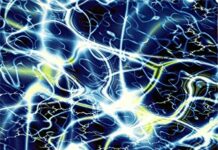
Ebook Info
- Published: 2008
- Number of pages: 260 pages
- Format: PDF
- File Size: 1.35 MB
- Authors: John Gribbin
Description
The Universe: A Biography makes cosmology accessible to everyone. John Gribbin navigates the latest frontiers of scientific discovery to tell us what we really know about the history of the universe. Along the way, he describes how the universe began; what the early universe looked like; how its structure developed; and what emerged to hold it all together. He describes where the elements came from; how stars and galaxies formed; and the story of how life emerged. He even looks to the future: is the history of the universe going to end with a Big Crunch or a Big Rip?
User’s Reviews
Reviews from Amazon users which were colected at the time this book was published on the website:
⭐If you enjoy science and want to know about how scientists have been able to discover the history of (our visible) Universe from the first microseconds (but not before, yet, we need quantum gravity)mostly by observing the electromagnetic radiation coming from the heavens, this is a great book to read. It is not too difficult, although if this is your first book on the subject you may not understand some things, but keep reading because you will participate in the best detective story ever told.The scientific method is the most succesful human endeavour. Unlike philosophy, which is almost entirely speculative, it combines a solid theoretical framework based in quantitative mathematical modelling (at least in physics) with experimental and observational evidence obtained with ever more precise (and costly) instruments. Since early cosmology and particle physics coincide in being high energy domains, each branch learns form each other and the future satellites scheduled to be launched in the next 10 to 20 years, together with the new ground based telescopes and the Large Hadron Collider augur a golden epoch for cosmology.Gribbin is a great writer and, although I have read dozens of books on the subject, I did learn a quite a few new things. Highly recommended.
⭐A lot of info provided. Much has been confirmed though tests/experiments and modern satelite observations. A great book to try and understand the state of our knowledge of the Universe.
⭐John Gribbin’s deserved reputation is well endorsed by this book. His ability to make the arcane or obscure clear and understandable is brought to bear on some of the most difficult topics in science – the complex physics of the Big Bang, the actions taking place within an atom, and the very origins of life on Earth. He even reaches into the future to consider “How Will It All End?” That track, from chaotic beginnings to some poorly defined end, constitutes a “life”. Hence “A Biography” is explained in the title.The “birth” of the universe had no midwives and the certificate can be read only by some instruments and inspired perception. However, as Gribbin makes serious effort to explain, those early times can be deduced to a large extent. The deductions are explained in the preliminary opening chapter where he discusses what “we think we know” and why. The foundation of much scientific thinking rests on “models” which are representative of reality, not reality itself. Models are the means whereby reality is tested, which is what renders the model subject to modification. In his chapters on the big bang and atomic theory, Gribbin shows how models have been refined as new information is accumulated from space or derived in the laboratory.The author is effusive in his admiration of how much new knowledge, and the models explaining it, arose in the 20th Century. The forces comprising atomic “particles” are carefully explained, with credits acknowledging the researchers identifying them and their significance. More than any other aspect, the universality of those forces is key to understanding how the universe developed from the initial outburst. Although that universality has prompted attempts to devise a “theory of everything”, there remain too many variants to allow a single concept to encompass them all. Why, for example, is the universe dominated by particles instead of their “anti-” equivalent? Gribbin takes us through the steps, showing how forces shaping our known universe were the result of its cooling and dispersion. His explanation of the “inflation” phase of the universe’s development is a fine example of his prose skills. Most compelling in his description is the proposal that new “universes” could be emerging from within our own, going through similar processes, but invisible to us through their propagation of new dimensions in their formation.From its abrupt beginning, the author continues, the universe had “reached the ripe old age of thirteen minutes” when all the particles we know today had been formed. For another hundred thousand years [in a universe nearly 14 billion years old!] “nothing much happened” beyond further expansion and cooling. The expansion was constant, but there were “ripples” in the material composing the universe. These inconsistencies allowed gravity to impose its weak but ever-present force to begin the formation of the first stars and galaxies. He notes how recently [2004] the Hubble Deep Field survey has detected light from those stellar groupings. A prize aspect of this book is the updating of information accomplished in recent years. That research is providing new insights into how “flat” the cosmos is and what its likely finish will be like – the topic of his conclusion.Before that time, however, we must address the origins of those doing the research and predictions. Life on Earth is the focus of many fields, from astronomy, nuclear physics and the actions that take place in forming stars – and their planets. His chapter on the origins of life is the most enthralling of all. Far from a unique occurrence in the universe, planetary formation and the stirrings of life are almost certainly common occurrences. Gribbin explains how organic molecules occur in such diverse environments as stellar birth and death. He notes than more than 130 complex organic molecules, most based on carbon, but some on other elements are formed and transported across space. The material of cell membranes is seen in space, and in contact with water, spontaneously generate the structure of microbes. All these compounds are arriving here borne by space debris – comets and meteorites.His conclusion, given how little we still “know” about universe development, is understandably sparse. No definitive answer of how the universe will “die” is available at this time. Gribbin explains the background ideas and speculations on the universe’s finale with his usual skill. His grasp of ideas is firm and skillfully presented. In fact, about the only thing that can be said to be missing is some illustrative material to enhance his prose. [stephen a. haines – Ottawa, Canada]
⭐Gribbin updates his previous similar books ( In the Begining & The Case of the missing neutrinos ) with quite a diverse book. It is obvious that to understand large scale events in the universe, also requires a grasp of the very small. Gribbin kicks off with several chapters to bridge this gap and his analogies are spot on.However, despite reading loads of popular science and being educated in A-level physics, I still found the first hundred pages a bit of a labour of love. It could have done with a chart to help picture the relationship of the small particles mentioned. The glossary of terms was a helpful aid.After this small matter (sorry), the actual universe description was characteristically spectacular. This was Gribbin on home territory and generally describing areas of science that seem better understood.All things considered, if you want up to date cosmology knowledge without equations, this is highly recommended. If you would prefer a slightly easier read on a similar subject, consider “Our cosmic origins” by Armand Delsemme or “The 5 ages of the Universe” by Gregory Laughlin, which I thought were both fantastic reads.
⭐Certainly a book that one cannot put down,and in fact will re-read a few times – good value. Superb read and trustworthy of facts.How the man does it,page after page, can only be his obvious interest in the subject which becomes one’s own interest , very quickly. A marvellous gift to any child as well.
⭐Arrived before expected :)I would recommend this book for someone with some previous knowledge on the universe looking for an interesting account on particle physics and astrophysics.
⭐Most lucid exposition of the models and assumptions on which the super-structure of science is built. Brilliant book. John Gribbin has done a service to the world of science.
⭐excellent book for beginners who are interested in cosmos.this book is about the life history of cosmos and also about the future.the author makes complex topics easy to understand.
Keywords
Free Download The Universe: A Biography in PDF format
The Universe: A Biography PDF Free Download
Download The Universe: A Biography 2008 PDF Free
The Universe: A Biography 2008 PDF Free Download
Download The Universe: A Biography PDF
Free Download Ebook The Universe: A Biography


